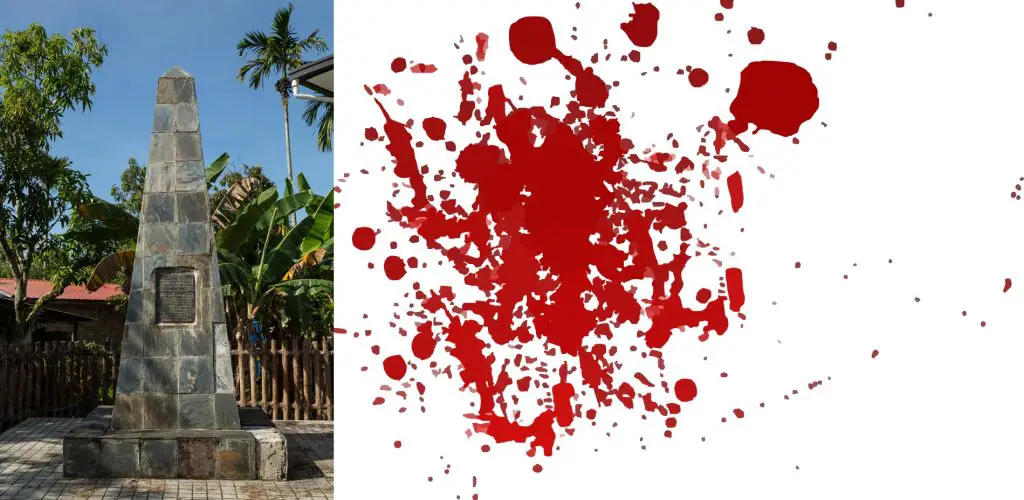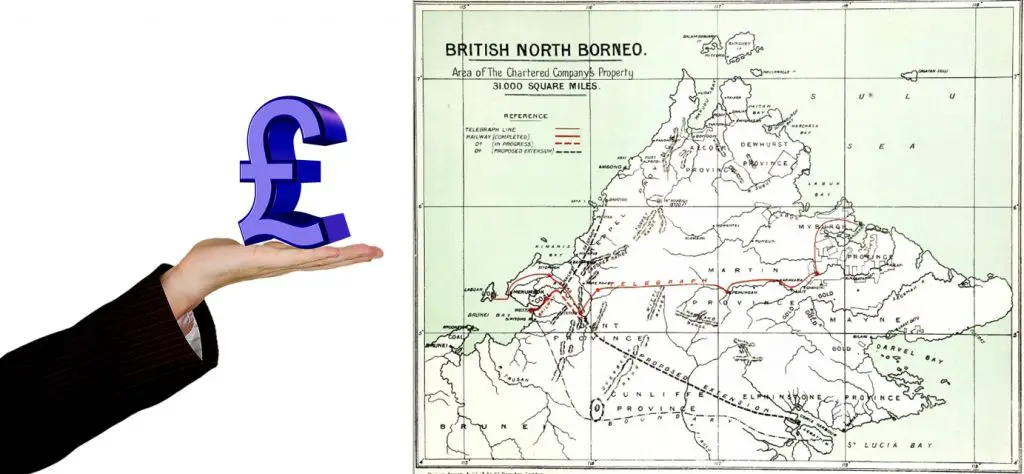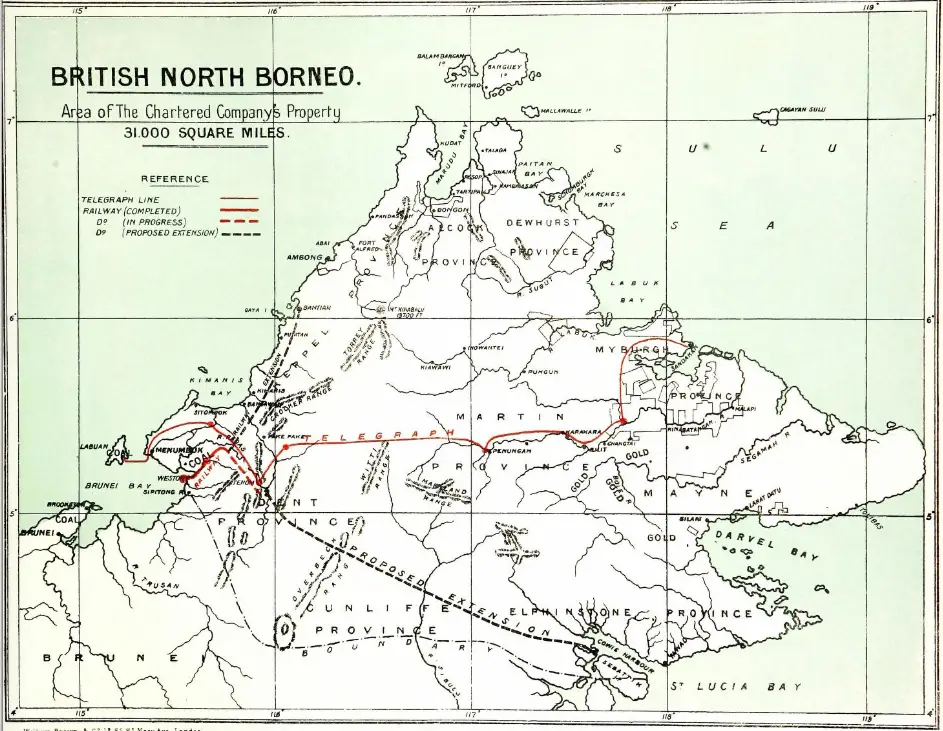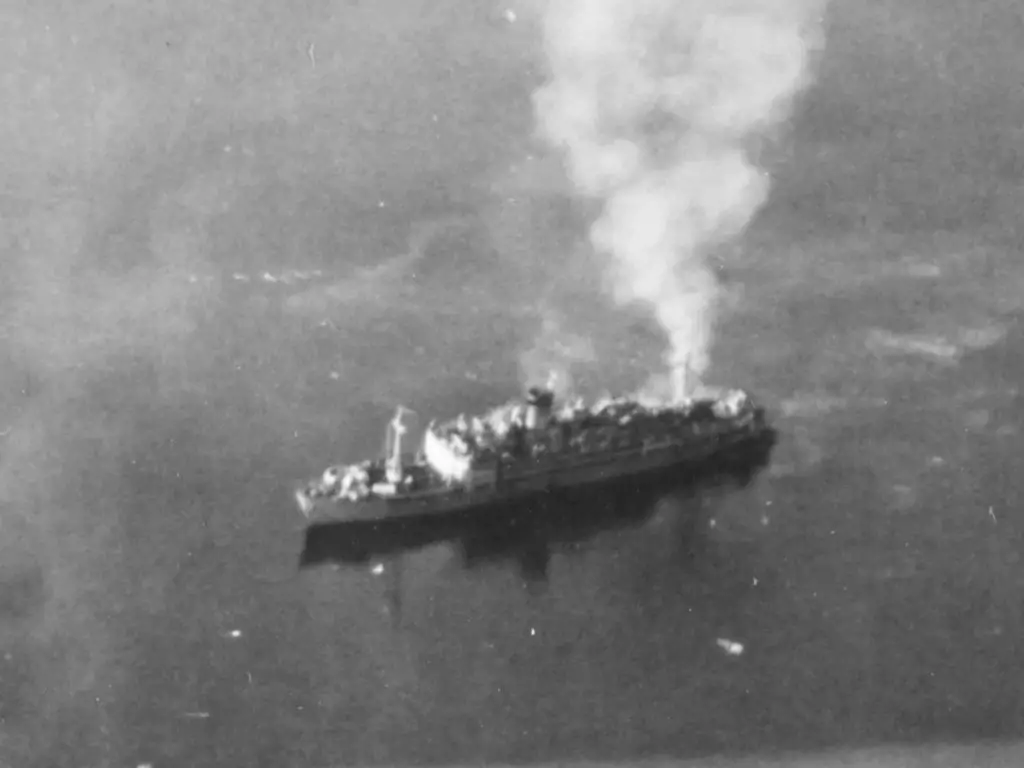Somewhere in a village called Kawang in Sabah, stands an obelisk called the De Fontaine Memorial.
It was built by the British North Borneo Company (BNBC) to remember what took place on that spot on May 12, 1885.
On that day, a group of British officials from the BNBC and members of the North Borneo Armed Constabulary were attacked by the local Bajau people while they were on an expedition to search for a Murut chief called Kandurong.
The memorial was named after Captain de Fontaine. He was a member of the Singapore Police Force prior to taking up his career as the Chief Inspector of North Borneo Armed Constabulary.
What better way to know what took place on that day other than reading the news report on the incident?
On June 5, 1885, The Straits Times published the news “Amok in the Kawang river”.
News reporting the death of Captain de Fontaine
“The government launch ‘Kimanis’ arrived at Sandakan before daybreak on the 15th May, from the West Coast, bringing the most sad and unexpected intelligence of an emeute on the Kawang river, in the vicinity of Papar resulting in the loss of valuable lives.
“It appears that on the 10th instant, Resident Davies, Captain de Fontaine, Dr Fraser, Assistant Resident Little, and Mr J.E.J. Wheatley, with a party of Constabulary, arrived at Kawang, which was selected as the most direct and convenient point of departure for an expedition to the village of a Murut chief, one Bandurong.”
Before they started their punitive expedition, the company’s entourage realised they did not have enough Dusun baggage carriers.
They needed 50 baggage carriers to carry their items into the mountainous jungle of Crocker Range.
However, they only had 20. The British then asked the Bajau headmen of Kawang village to provide the remaining 30 baggage carriers.
When the Bajaus refused to do so, the British resident warned them that their village would be fined.
The tension between the British officials and Kawang villagers became more intense when they discovered a stolen water buffalo at the village.
Even after the Bajaus had returned the stolen water buffalo, they still refused to provide them with more porters.
Since the company did not have enough porters, they started to discuss postponing the punitive expedition.
The incident becomes bloody

And that was when things turned bloody – even before the BNBC had to face the famous Murut chief, Kandurong.
“The Europeans and the Officers of the Constabulary were standing about under a tree in a large plain near the village, when two men came up with muskets in their lands and entered into an apparently friendly conversation with Dr Fraser. Without any warning, one of the men suddenly discharged his musket, killing the doctor instantaneously.”
After that, the killers tried to escape.
The news stated, “they then endeavored to escape by rushing across the plain towards the jungle when Captain de Fontaine, in the most plucky manner, pursued them.
All this happened in the space of a few minutes only, and no one had time to support Captain de Fontaine before he tripped and fell on the ground, when the Bajows turned on him and inflicted no less than nine spear wounds on different parts of his body, three of his assailants falling, however to his revolver.”
The news report further stated, “Until further intelligence is received, it is impossible to say whether the treacherous attack was premeditated or whether, as some think, the first gun went off by accident, giving rise to the panic which has had such results. Under the circumstance, therefore, we deem it right to refrain from comment.”
Was the attack premeditated?
However in British North Borneo: An Account of its History, Resources and Native Tribes (1922), Owen Rutter stated that there is no doubt that this outrage was premeditated.
He believed that the Bajaus had prepared the previous day for almost certain death.
“In his description of the attack Mr Whitehead (who was not actually present) offers excuses for the Bajaus, indeed from the way in which he writes one might suppose that they were defending their lives, their women and their property, whereas nothing was further from the case, and their onslaught was a unprovoked as it was treacherous. With the exception of the nine Bajaus (all of whom were either killed and wounded) none of the community took part in the disturbance and consequently no fine was imposed upon the village.
As for Rutter’s thought of what prompted the attack, he opined that the locals were worked up by Orang Kaya Awang who then lived in Kinarut. He was there when the attack took place.
At that time, Kinarut was not yet under the company but still under the Brunei sultanate. Orang Kaya Awang was believed to be against the company and a strong supporter of the sultanate.
The de Fontaine Memorial
Besides Captain de Fontaine, the incident also took the lives of Dr Fraser, Jemadhar Asa Singh and two more Sikh officers.
Meanwhile, Little and eight other policeman were wounded.
On Nov 20, 1911, The Strait Times reported that a memorial would be built in memory of the incident.
“The tree under which they were standing, an isolated tree in the midst of a plain, has ever since been regarded as a memorial, and was known as the “Government Tree.”
After the tree had fallen, a small pillar was built on the site.
Finally, an obelisk was built in September 1912 which is still standing to this day.
The price to pay for a punitive expedition
It was irony for the forces of North Borneo Armed Constabulary who found deaths even before going to a war with the local people.
Like many punitive expeditions held against alleged rebels in Borneo, many could not proceed without the help of the local people as part of the armed forces or even porters.
The company had to abandon their punitive expedition against Kandurong due to the Kawang incident.
But the BNBC did not forget about him as they sent another expedition against Kandurong in 1888. The war between Kandurong and the company did not end until January 1892 when a peace agreement was achieved between both parties.
























